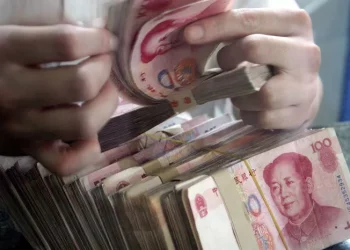The foreign exchange (forex) market is the world’s largest and most liquid financial market, where currencies are traded around the clock. Investors, businesses, and governments participate in forex trading to hedge risks, conduct international transactions, and speculate on currency movements. One of the most widely traded currencies in Southeast Asia is the Philippine peso (PHP), and understanding its exchange rate against the U.S. dollar (USD) is crucial for traders and investors alike.
In this article, we will analyze how $1,000,000,000 (one billion U.S. dollars) converts to Philippine pesos, explore the key factors affecting the USD/PHP exchange rate, and discuss trading strategies that forex traders can employ when dealing with this currency pair.
Current Exchange Rate and Conversion Calculation
The exchange rate between the U.S. dollar and the Philippine peso fluctuates daily due to supply and demand dynamics, macroeconomic factors, and geopolitical influences. As of recent market data, the USD/PHP exchange rate hovers around 56 PHP per 1 USD. Based on this rate, converting one billion U.S. dollars into Philippine pesos would result in:
1,000,000,000×56=56,000,000,000
This means that one billion U.S. dollars is equivalent to 56 billion Philippine pesos at the given exchange rate. However, this calculation is based on the mid-market rate and does not include transaction costs, bank fees, or bid-ask spreads.
Factors Influencing the USD/PHP Exchange Rate
Several factors contribute to fluctuations in the exchange rate between the U.S. dollar and the Philippine peso. Understanding these factors is essential for forex traders looking to capitalize on market movements.
1. Interest Rate Differentials
The interest rate set by the Bangko Sentral ng Pilipinas (BSP) relative to the U.S. Federal Reserve significantly impacts the USD/PHP exchange rate. When the BSP raises interest rates, the peso becomes more attractive to investors seeking higher yields, leading to an appreciation of the currency. Conversely, if U.S. interest rates rise, the dollar strengthens against the peso.
2. Inflation Rates
A country’s inflation rate directly affects its currency’s purchasing power. If inflation in the Philippines is higher than in the United States, the peso may depreciate against the dollar due to reduced purchasing power. Forex traders monitor inflation trends to predict long-term movements in exchange rates.
3. Trade Balance and Current Account Deficit
The trade balance, which represents the difference between a country’s exports and imports, affects currency valuation. The Philippines, which relies on imports for energy and commodities, often experiences trade deficits. A widening trade deficit can lead to peso depreciation, while a surplus can strengthen the currency.
4. Foreign Direct Investments (FDI) and Remittances
The Philippines receives billions of dollars in remittances from overseas Filipino workers (OFWs), which support the peso. Additionally, foreign direct investments into the country’s infrastructure and business sectors contribute to currency appreciation.
5. Political Stability and Economic Policies
Government policies, economic stability, and political events influence investor confidence. A stable government and pro-business policies attract foreign investments, supporting the peso’s strength. Conversely, political uncertainty or economic mismanagement can lead to currency depreciation.
Trading Strategies for USD/PHP Forex Traders
Forex traders use various strategies to profit from USD/PHP currency fluctuations. Below are some popular trading techniques:
1. Trend Trading
Trend traders follow long-term movements in the USD/PHP pair, identifying uptrends or downtrends using technical indicators like moving averages and trendlines. If the peso is consistently strengthening, traders may sell USD/PHP; if the peso is weakening, they may buy USD/PHP.
2. Carry Trade Strategy
The carry trade involves borrowing a currency with a low-interest rate (such as USD) and investing in a currency with a higher interest rate (such as PHP). This strategy is effective when interest rate differentials are significant and stable.
3. Scalping and Short-Term Trading
Scalpers take advantage of small price movements in USD/PHP by executing multiple trades within short timeframes. This strategy requires fast execution and low transaction costs.
4. Fundamental Analysis Approach
Fundamental traders focus on economic reports, interest rate decisions, and geopolitical developments to forecast future exchange rate movements. For instance, a positive GDP growth report from the Philippines could signal a stronger peso.
5. Hedging Against Currency Risk
Businesses that deal with imports and exports between the U.S. and the Philippines use hedging strategies like forward contracts and options to protect against unfavorable currency movements.
Implications of Large-Scale Currency Conversions
Converting one billion U.S. dollars into Philippine pesos can have broader implications on the forex market and the economy:
- Market Impact: A sudden influx of USD supply can increase peso demand, potentially strengthening the local currency.
- Liquidity Considerations: Large conversions can affect interbank liquidity, influencing short-term exchange rates.
- Regulatory Concerns: Governments monitor large forex transactions to prevent excessive volatility and speculative attacks on the currency.
Conclusion
The USD/PHP exchange rate is influenced by multiple economic, political, and financial factors. Converting $1,000,000,000 to Philippine pesos at a rate of 56 PHP/USD results in 56 billion PHP, but market conditions and trading costs may alter the actual amount received. Forex traders and investors must stay informed about interest rate changes, inflation trends, and global economic events to make strategic decisions when trading the USD/PHP pair.
By employing effective forex trading strategies such as trend trading, carry trades, and fundamental analysis, traders can navigate the complexities of the foreign exchange market and capitalize on USD/PHP fluctuations. Whether for speculative purposes or business transactions, understanding the dynamics of currency exchange is crucial for making informed financial decisions.
Related Topics:

























